Channa orientalis
Ceylon snakehead
SynonymsTop ↑
Ophiocephalus aurantiacus Hamilton, 1822; Ophiocephalus apus Canestrini, 1861
Etymology
Channa: from the Latin channe, used to refer to an unspecified species of sea perch.
orientalis: from the Latin orientalis, meaning ‘of the east’, in reference to the region of South and South East Asia referred to as ‘East Indies’ in the past.
Classification
Order: Perciformes Family: Channidae
Distribution
Endemic to southwestern Sri Lanka where it appears restricted to the so-called ‘wet zone’ (see ‘Habitat’). Confirmed localities are all within the Bentota and Kelani river systems and Kottawa Forest Reserve in Galle district, Southern Province,.
Type locality is given simply as ‘Habitat in India orientale’, and this appears to have caused confusion regarding the species’ distribution with it sometimes said to occur throughout South and Southeast Asia (see ‘Notes’).
In reality it is probably endangered in the wild, and responsible aquarists tend to maintain known collections or variants separately in order to maintain blood lines and prevent population-mixing. Those in the hobby include ‘Kottawa A’, Kottawa B’ and ‘black fin/flathead’.
Habitat
The ‘wet zone’ of southwestern Sri Lanka is an area receiving annual rainfall of 2000-3000 mm, much of which arrives during the South-West monsoons between March and August. It is a tropical environment with no significant dry spells or climatic changes, and air temperature remains fairly constant throughout the year, ranging from 25 – 27 °C. Such conditions favour development of lowland tropical rainforest at altitudes below 1000 m AMSL.
In Sri Lanka these forests are found only in the wet zone and they and they are inhabited by a significant proportion of the country’s endemic flora and fauna, with the moist, warm climate and long period of geographic isolation having led to exceptional localised biodiversity.
Unfortunately the majority of original forest cover has been cleared for plantation agriculture, much of it when the country was under British colonial rule, though a significant portion was also removed during the more-recent civil war, with more than 35% lost between 1990 and 2005. As of 2006 only 4.6% of the old forest was left, with this remainder existing as small, highly-fragmented patches, most covering areas less than 10 km², some of which are now officially-protected reserves.
Kottawa Forest is one of these and comprises just 15-20 hectares of wet, evergreen jungle, though the combined Kottawa-Kombala forest covers around 1600 ha.
A number of small, typically shallow streams containing clear or slightly-stained water traverse the reserve and these represent typical habitats of C. orientalis across its range.
Little sun is able to penetrate the forest floor so aquatic habitats are shaded and water temperature may be relatively cool, while conductivity and hardness are generally low and pH slightly acidic. Macrophytes are uncommon though there may be dense, marginal vegetation, sometimes overhanging the full width of the stream, the roots of which may penetrate the banks underwater. Typical substrates are sandy or silty and often covered by a layer of leaf litter with fallen twigs and branches.
Sympatric fish species include Rasboroides vaterifloris, Puntius bimaculatus, P. kelumi, P. titteya, Pethia nigrofasciata, Dawkinsia singhala, Schistura notostigma, Mystus vittatus, Aplocheilus werneri, Malpulutta kretseri, and Mastacembelus armatus.
Maximum Standard Length
90 – 100 mm.
Aquarium SizeTop ↑
An aquarium with base dimensions of at least 90 ∗ 30 cm is recommended.
Water depth is less important but should not be less than 30 cm.
Maintenance
Prefers a dimly-lit aquarium with a layer of surface vegetation such as Ceratopteris spp. plus some submerged cover.
Driftwood roots and branches can be used and placed in such a way that a few shaded spots are formed, while the addition of dried leaf litter is also recommended.
It is essential to use a tightly-fitting cover since Channa spp. are notorious for their ability to escape, and a gap should be left between this and the water surface as they require access to a layer of humid air.
Water Conditions
Temperature: 16 – 24 °C
pH: 5.0 – 7.5
Hardness: 18 – 179 ppm
Diet
An obligate predator which probably feeds on smaller fishes and insects in nature, but in most cases adapts well to dead alternatives in captivity. Some specimens may accept dried foods though these should never form the staple diet.
Young fish can be offered chironomid larvae (bloodworm), small earthworms, chopped prawn and suchlike, while adults will accept strips of fish flesh, whole prawns, mussels, live river shrimp, larger earthworms, etc.
This species should not be fed mammalian or avian meat such as beef heart or chicken since some of the lipids contained in these cannot be properly metabolised by the fish and may cause excess fat deposits and even organ degeneration. Similarly there is no benefit in the use of ‘feeder’ fish such as livebearers or small goldfish which carry with them the risk of parasite or disease introduction, and tend not have a high nutritional value unless properly conditioned beforehand.
Behaviour and CompatibilityTop ↑
Best maintained in the absence of other fishes, and captive breeding should be the priority given its conservation status. Nevertheless, C. orientalis can be kept in a well-chosen community arrangement alongside peaceful, non-territorial tankmates that are too large to be viewed as prey.
Young specimens can be maintained together but usually begin to display aggressive behaviour towards one another as they become sexually mature, although this does vary somewhat between individuals. Should a pair form they are usually peaceful towards one another but hostile to other conspecifics to the extent they may be badly injured or killed.
Sexual Dimorphism
Adult males tend to be slightly smaller in build and possess more intense colouration in the unpaired fins than females. The colour pattern intensifies further in nuptial individuals.
Reproduction
This species is a paternal mouthbrooder which forms lasting pair bonds. Unless a proven pair is available it is best to begin with a group of 6-8 young fish and allow them to select their own partners. Once a pair has formed the other fish should ideally be removed after which spawning can be induced by a prolonged period of constant temperature and lack of water changes.
At the peak of courtship the pair embrace in a similar way to anabantoids, and the male collects the fertilised eggs in his mouth where they normally remain for a period of 3-5 days (although some individuals have been observed to hold the fry for up to 10 days).
Once released the young fish are easy to raise with females producing produce infertile eggs in order to feed them once they become free-swimming. Brood care may extend for several weeks, and fry tend to grow faster when left with the parents rather than raised elsewhere.
SF contributor Colin Dunlop has written a detailed article about his experience breeding C. orientalis which can be viewed here.
NotesTop ↑
This species has also been referred to as the ‘green’, ‘smooth-breasted’, or ‘walking’ snakehead.
Its scientific name has and continues to be widely misapplied in reference to Channa populations outside its natural range with all the following having been considered to represent C. orientalis in the past: Channa gachua (non Hamilton, 1822); Ophiocephalus marginatus (non Cuvier, 1829); Ophiocephalus coramota (non Cuvier, 1831); Ophiocephalus fusca (non Cuvier, 1831); Ophiocephalus limbatus (non Cuvier, 1831); Ophiocephalus montanus (non McClelland, 1842); Philypnoides surakartensis (non Bleeker, 1849); Ophiocephalus gachua kelaarti (non Günther, 1861); Ophiocephalus kelaarti (non Günther, 1861); Ophiocephalus kelaartii (non Günther, 1861); Ophiocephalus gachua malaccensis (non Peters, 1868); Ophiocephalus harcourtbutleri (non Annandale, 1918); Channa burmanica (non Chaudhuri, 1919).
The majority of these names are currently considered synonymous with the widespread species Channa gachua, the taxonomy of which remains a complex and unresolved problem.
C. orientalis is one of several genus members to lack pelvic fins, with other diagnostic characters including: gular scales absent; 6-7 predorsal scales 6-7; 5-6 scales between posterior border of orbit and posterior edge of preopercle; 40-41 lateral line scales; 21-22 anal-fin rays; 30-34 dorsal-fin rays; 13-15 pectoral-fin rays; dorsal-fin base 58.0–59.6 % SL; anal-fin base 36.4–38.8 % SL; ocellated spot in posterior portion of dorsal fin, above caudal peduncle, in juveniles and females; pectoral-fin with 5 dark, narrow bands; lower jaw with 10-20 canines behind single row of villiform teeth, the latter expanding to about 7 rows at jaw symphysis; prevomer and palatines with canine-like teeth.
Members of the family Channidae are commonly referred to as ‘snakeheads’ due to possession of large scales on the head of most species which are reminiscent of the epidermal scales (cephalic plates) on the heads of snakes. There currently exist over 30 valid species but diversity within the group is likely to prove significantly greater.
The existence of distinct phylogenetic groups has been proposed with the putative C. gachua species assemblage of Britz (2008) containing C. orientalis, C. gachua, C. bleheri, C. burmanica, C. barca, C. aurantimaculata, and C. stewartii.
All Channa spp. possess supplementary breathing apparatus in the form of paired suprabranchial chambers located behind and above the gills, although these are not labyrinthic but lined with respiratory epithelium. These chambers allow the fish to breathe atmospheric air and survive in hypoxic conditions or even out of the water for a considerable period of time, and in aquaria they are often seen rising to the surface to take gulps of air.
References
- Bloch, M. E. and J. G. Schneider, 1801 - Gottlob Schneider, Saxo. Berolini. Sumtibus Auctoris Impressum et Bibliopolio Sanderiano Commissum: i-lx + 1-584, Pls. 1-110
M. E. Blochii, Systema Ichthyologiae Iconibus cx Ilustratum. Post obitum auctoris opus inchoatum absolvit, correxit, interpolavit Jo. - Brede, N. and P. Antler, 2009 - Natur und Tier Verlag, Münster: 62 pp.
Schlangenkopffische—Die Gattungen Channa und Parachanna. - Britz, R., 2013 - Zootaxa 3731(2): 287-294
Channa andrao, a new species of dwarf snakehead from West Bengal, India (Teleostei: Channidae). - Courtenay, W. R., Jr. and J. D. Williams, 2004 - Circular, U. S. Department of the Interior, Geological Survey No. 1251: i-v + 1-143
Snakeheads (Pisces, Channidae) - a biological synopsis and risk assessment. - Ng, H. H., P. K. L. Ng and R. Britz, 1999 - Journal of South Asian Natural History 4(1): 57-63
Channa harcourtbutleri (Annandale, 1918): a valid species of snakehead (Perciformes: Channidae) from Myanmar. - Rainboth, W. J., 1996 - Rome, FAO: 1-265, Pls. I-XXVII
FAO species identification field guide for fishery purposes. Fishes of the Cambodian Mekong. - Roberts, T. R., 1989 - Memoirs of the California Academy of Sciences No. 14: i-xii + 1-210
The freshwater fishes of western Borneo (Kalimantan Barat, Indonesia). - Shrestha, T. K., 2008 - Himalayan Ecosphere, Kathmandu, Nepal.: 389 pp., 72 pls.
Ichthyology of Nepal. A study of fishes of the Himalayan waters. - Vierke, J., 1991 - Das Aquarium 25(259): 20-24
Ein farbenfroher neuer Schlangenkopffisch aus Assam: Channa bleheri spec. nov.

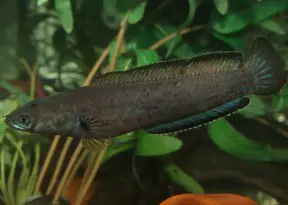
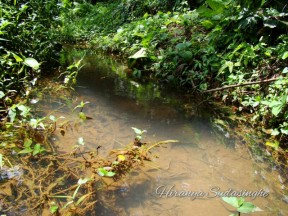
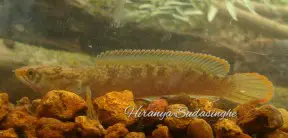
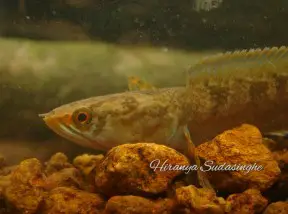
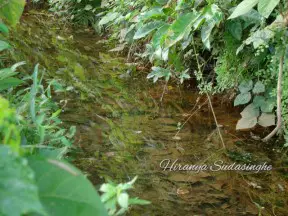
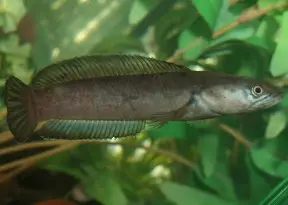
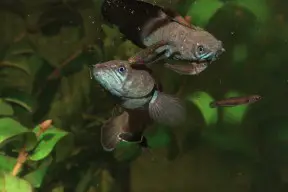
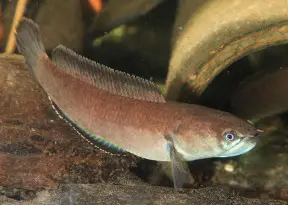
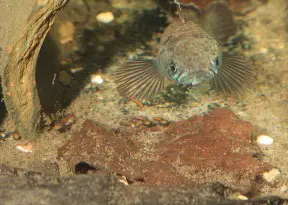
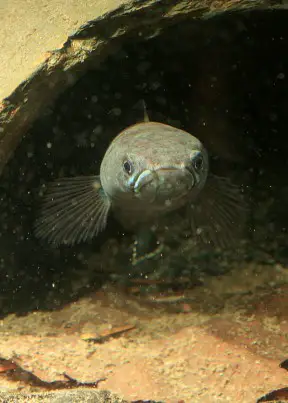
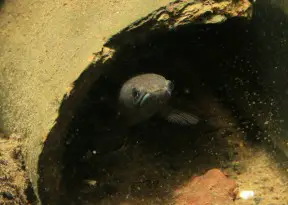

December 30th, 2013 at 3:58 pm
in the aquarium size section, 36 what?
January 1st, 2014 at 2:28 pm
Thanks for pointing that out. Fixed and the profile has been given a full edit too. 🙂